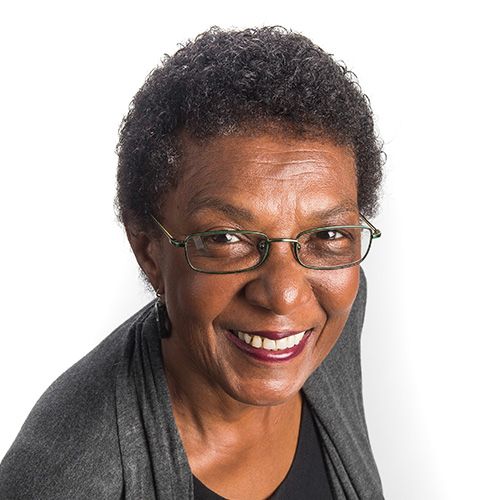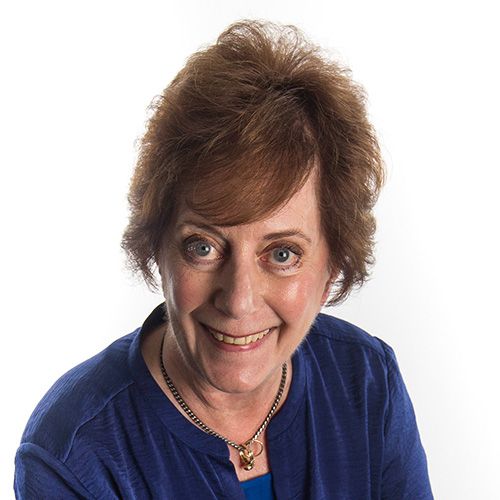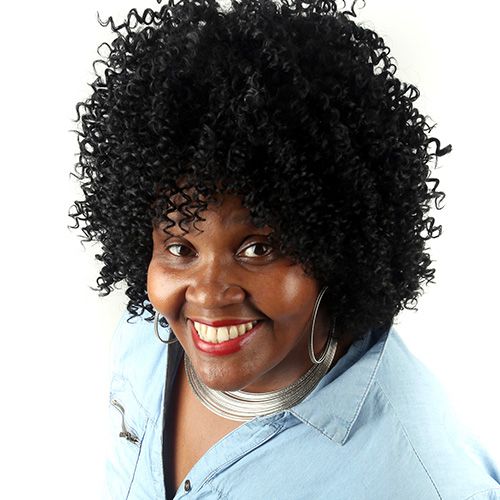Thirty-nine times, black men and women engaged with real estate agents as paired undercover testers in Newsday’s investigation. In 19 of those times, the testing suggested they experienced disparate treatment compared with matched white testers. Additionally, one agent warned white and Asian testers to avoid predominantly black communities.
Kelvin Tune, 54, a federal employee, met with nine courteous, professional agents. He had no idea that seven of those meetings produced evidence of unequal service, with one agent in effect shutting him out of considering houses in the bedrock Long Island community of Plainview.
“I wasn’t welcomed to Plainview for her,” said Tune on learning the results of that test.
Johnnie Mae Alston, 65, a retired state worker, had no idea that an agent refused to provide her service on the same terms offered to a white client.
“I would have never known,” Alston said on learning how her experiences as a tester in Newsday’s investigation compared with the experiences of her white counterparts.
Speaking of the real estate agents she met, Alston added: “They make you feel like they are treating you like everybody else. That’s because you don’t see the other side. But once you see the other side, you realize that you aren’t treated that well.”
All these testers – both minority and white – discovered for the first time how their experiences compared when Newsday brought them together for joint interviews.
Testing found evidence that:Black testers experienced unequal treatment
49% of the time
- Newsday’s black testers experienced disparate treatment at higher rates than did Hispanic (39 percent) and Asian testers (19 percent).
- In 11 cases, agents directed black testers to different neighborhoods than white testers in comparisons that showed evidence of steering.
- In five instances, agents imposed conditions on black testers that amounted to the denial of equal service compared with conditions requested of white testers.
- In three cases, agents either spoke about steering to the white tester but not the black tester or volunteered information about the ethnic makeup of communities only to white testers.
- Altogether, agents provided white testers an average of 50 percent more listings than they gave to black counterparts – 39 compared with 26, including instances when agents provided no listings to one tester.
There was no such gap in paired testing for other minorities. Agents gave both Hispanic and white testers an average of 42 listings. Asians received 18 compared with 22 given to white testers.
Limiting choices can help guide buyers toward and away from communities.
“Probably the most powerful tool for steering is through information withholding,” said Jacob Faber, an assistant professor of sociology at New York University who studies segregation.
“So that job as information conveyors is just really important.”
Before the changes driven by the civil rights movement, real estate agents often refused outright to serve black buyers. Today, experts say discrimination more likely takes the form of subtly directing buyers of different backgrounds toward different communities or requiring minorities to overcome higher financial barriers than whites.
Following are four case histories that show evidence of the disparate treatment hidden in house hunting while black on Long Island a half century after passage of the federal Fair Housing Law. They are accompanied by the findings of fair housing consultants Fred Freiberg, executive director of the Fair Housing Justice Center, and Robert Schwemm, professor at the University of Kentucky College of Law.
The opinions of Freiberg and Schwemm are based on data provided by Newsday. Their judgments are not legal conclusions.
The case histories each include the experts’ findings, and responses of agents and the companies they represent.
Agent diverts a black buyer from agent’s hometown Plainview
Anthony Congiano, who is white, met agent Donna Rogers in the Douglas Elliman Real Estate office in Plainview in May 2016. He was looking for a three-bedroom house within 30 minutes of neighboring Bethpage. He said his wife had gotten a job there. His maximum price was $550,000.
Rogers advised that $550,000 would buy access to houses requiring minimal renovations in Plainview and Bethpage.
“For the budget that you’re giving me in Bethpage, you’ll definitely find something, you know, that’s going to be less work, you know, less stuff to do. In Plainview, it’s a good budget. You know, Plainview you may have to do one or two things,” she said.
Congiano indicated that he would be willing to do some repairs. “I can get my hands dirty, if I have to, you know, fix a few things, that’s not really a problem for me,” he told the agent.
Rogers responded: “OK. I mean, I’m confident we can definitely find you something. Pretty much, you know, you might just have to go in and rip up the carpets, paint.”

Black Tester:
Kelvin Tune
Listings Given:
11
Census Tracts:
72% white on average

White Tester:
Anthony Congiano
Listings Given:
10
Census Tracts:
82% white on average
In fact, Rogers told Congiano that her childhood home, where her mother still lived, was on the market for $539,000. She said she had lived in Plainview for 29 years and in the Plainview-Old Bethpage area for 43. She described the house as “all renovated, basically.”
“You may not like the carpet so you may have to change out the carpet or something. Little things, you know,” Rogers said.
Kelvin Tune, who is black, met with Rogers five months later, also seeking a three-bedroom house within 30 minutes of Bethpage. He said his elderly mother lived in the community.
Tune mentioned nearby Hicksville as a place his purported wife had suggested, but then immediately focused on Bethpage, telling Rogers, “my mom’s lived here in Bethpage,” and saying both that “we’d like within a half-hour range” and a “30-minute radius.”
His top was also $550,000. Now, Rogers said that a $550,000 budget would limit choices in Plainview.
“For instance, in, say, Bethpage, you’ll probably find a house pretty much done. You may have to do like one bathroom, you know, or something like that, or maybe just go in and paint, or something like that. You’ll get a nice house for 550. This area you get nothing,” she told Tune. “Nothing for five, but you will get something that needs a total renovation.”
Only a month before speaking with Tune, the house that Rogers had touted to Congiano as her well-maintained childhood home was taken off the market. On her brokerage web page, Rogers described the house as featuring an eat-in kitchen with new central island, two “new full” baths, a Jacuzzi tub, a “newer” roof and siding and “new” fencing. The house sold for $485,000.
When Tune asked, “So the district is, Plainview is out of the question?” Rogers responded, “Right. Plainview, you’re not going to find something – it’s going to be tough to find something that’s like what you’re looking for.”
Rogers suggested other possibilities: Hicksville, East Meadow and Farmingdale. The school populations in those communities were 33 percent white, 54 percent white and 65 percent white – compared with higher than 70 percent in Plainview and Bethpage. She did not mention Hicksville, East Meadow and Farmingdale to Congiano.
Rogers talked about school districts with both Congiano and Tune, providing different information.
Speaking with Congiano, Rogers said Plainview and Bethpage both “have the good school districts.”
“They have very high ratings for Plainview, you know, Plainview, Bethpage,” she said, “Actually, I think Bethpage did really, really well. They might have even surpassed Plainview, to be honest with you.”
She added: “And I’m a mom, so I know, you know what I mean? So, look, you know, when you’re looking for a house, especially when you have a child, that has to be like, you know, number one no matter what. You know, you want a good school district.”
In contrast, while speaking with Tune, Rogers said nothing about the quality of the Plainview or Bethpage schools as a selling point. Instead, she told him, “You need to do research on school districts” by consulting ratings that are available online.
She also counseled Tune to take the ratings “with a grain of salt.” Showing him one such computation, she noted that Garden City High School was rated at 96.2 while East Islip scored 70.9.
“It doesn’t mean anything. It’s just — it’s just giving you a basic idea, OK?” Rogers said, adding: “They’re all good schools. You just – you know, just some of the ratings are different. That’s all.”
Rogers provided listings that directed Tune as far as 10 miles away from Plainview while centering Congiano there and in Bethpage.
She located Congiano in areas with a higher percentage of whites than in the areas she suggested to Tune. Additionally, she placed Tune in school districts with higher minority representations.
Congiano’s listings – five in Plainview, five in Bethpage – fell in census tracts where whites made up 82 percent of the population.
Tune’s listings – a total of 11 spread among Hicksville, Levittown, Bethpage, East Meadow and Farmingdale – landed in tracts where whites had a 10 percentage-point smaller share of the population at 72 percent. Rogers included none in Plainview.
Drawing on data it purchases from the Multiple Listing Service of Long Island, the system used by the Island’s real estate industry to market homes, Zillow computed that more than 30 houses were on the market in the Plainview ZIP code on the dates of both tests.
“It makes me feel almost sick to my stomach that she did it, because that’s, in my perception, I see that as steering him away. But I am not shocked about it. I’m not shocked because she did do it subtly,” Congiano said on learning the test results.
Experts’ Opinions
Freiberg: The agent’s comments and conduct suggest racial steering.
The agent was willing to provide an unqualified opinion on the high quality of schools in certain areas to the white tester, while telling the African American tester to do his own research on schools and cautioning that online school ratings may not be the best indicators of school quality.
The agent provided home listings to the African American tester that were in areas with slightly larger minority populations served by school districts with a larger minority student population when compared to the home listings the agent provided to the white tester. For instance, the agent did not select any listings for the African American tester in Plainview (where the agent has resided) and discouraged him from considering Plainview based on his price range, but the same agent provided the white tester with home listings in Plainview in the same price range.
Schwemm: The facts show steering not so much regarding the number of listings in white areas, but the zero listings for the black tester in Plainview while the white tester got lots there.
Agent and Company Responses
Representing both Rogers and the Douglas Elliman company, an attorney with the Kasowitz Benson Torres LLP law firm watched the video recordings of the agent’s meetings with testers and reviewed listings maps. Firm partner Jessica Rosenberg then challenged the validity of Newsday’s findings.
Rosenberg said that black tester Tune had influenced Rogers’ choice of listings by indicating both a desire to avoid traffic and citing Hicksville as a possible choice.
Explaining why Rogers chose Plainview only for the white tester, Rosenberg said Rogers may have misinterpreted the black tester’s “willingness to do a renovation.” Rosenberg said that the white tester had said “I can get my hands dirty,” when asked about doing work on a house, while the black tester had said, “I don’t want to do too much work.”
Rosenberg failed to note that after saying he could get his hands dirty the white tester added, “Nothing that major. But if I have to, you know, fix a few things, that’s not really a problem for me.”
Rosenberg did not comment on Rogers’ statement to the black tester, “This area you get nothing” for $550,000.
Explaining the different information Rogers provided to the testers about schools, Rosenberg said that, between the dates of the two tests, Rogers “attended a continuing legal education class regarding the Fair Housing Act” at which she was instructed “to avoid making any comments on the quality of school districts to avoid any steering accusations.”
Rogers was licensed in 2012. Like all real estate agents in New York, she was required to complete four hours of training in fair housing and discrimination as part of a 75-hour licensing course and exam. Agents also must complete three hours of fair-housing training every two years as part of their 22.5 hours of mandated continuing education.
Agent demands identification from a black buyer but not a white buyer
Kimberly Larkin-Battista, who is white, told Realty Connect USA agent Margaret Petrelli in June 2016 that she and her husband were looking for a house within an hour of Manhattan with a $600,000 maximum price. She advised Petrelli that they had a 4-year-old son.
“So, you’re gonna wanna put him in a good school district,” responded Petrelli, who was located in Levittown.
She wrote district names on a piece of paper, citing Wantagh as “blue ribbon” and touting Seaford, Plainedge, Bethpage, Levittown, Bellmore, North Bellmore and Merrick. The populations of those communities ranged from 79 percent to 92 percent white.
“All of these areas are good, and they’re beautiful,” Petrelli said.
She also highlighted 91 percent white Massapequa – but not the section of Massapequa that falls within the neighboring Amityville district, saying, “You’re not going to like those schools.”
The Amityville school population is 92 percent black and Hispanic. In 2018, 19 percent of the high school graduates achieved a Regents diploma with advanced designation, indicating passage of eight Regents exams. The Massapequa district proportion was 66 percent.

Black Tester:
Liza Colpa
Listings Given:
2
Census Tracts:
58% white on average

White Tester:
Kimberly Larkin-Battista
Listings Given
8
Census Tracts:
88% white on average
Five months later, Petrelli looked elsewhere for $600,000 houses after meeting with Liza Colpa, who is black. Colpa told Petrelli that “school districts are super important to us” as the parents of a 4-year-old. Petrelli offered no written recommended districts list.
Now, Petrelli emphasized East Meadow, then 69 percent white, and Hicksville, 57 percent white, and Levittown, 79 percent white. She also looked as far away as New Hyde Park, 50 percent white, and Floral Park, 80 percent white, both more than 10 miles distant from her office.
All told, Petrelli mentioned Merrick, Bellmore, Wantagh, Seaford, Massapequa, Bethpage and Plainedge 22 times when speaking with white customer Larkin-Battista. She never mentioned those communities to black customer Colpa.
Conversely, Petrelli referenced East Meadow and Hicksville 26 times while speaking with Colpa and never while talking with Larkin-Battista.
Most striking, Petrelli asked Colpa for identification after escorting Larkin-Battista on house tours without requesting ID. A Newsday reporter, posing as Colpa’s husband, followed up in a phone conversation with Petrelli. On the call, Petrelli asserted that it was office policy to ask all customers for identification.
“We always do that,” Petrelli said, adding, “That’s what we do with everyone.”
Petrelli sent Larkin-Battista eight listings in Levittown and Wantagh census tracts that averaged 88 percent white. She recommended two homes to Colpa, one in East Meadow, one in Hicksville, in census tracts that averaged 58 percent white.
Petrelli’s demand for identification unsettled the testers.
“The identification part really shocks me, because I was never asked in any instance for identification. And just the fact that she did that and also said, after the fact, that she does that all the time. And obviously, she doesn’t,” Larkin-Battista said.
Experts’ Opinions
Freiberg: Denial of equal service to the African American tester, the disparaging statement made to the white tester about a predominantly minority school district and the provision of home listings in different areas raise very serious concerns about both racial steering and discriminatory treatment.
The agent told the African American tester it was office policy to require a valid ID from all prospective buyers before agents could take them to view homes for sale even though the same agent took the white tester out to view homes for sale without asking for identification.
Also, the agent, in mentioning Massapequa as an area the white tester might want to consider, steered the white tester away from a part of that community that feeds into the predominantly minority Amityville school district stating “you’re not going to like those schools” while the agent did not make similar statements to the African American tester.
Finally, the agent provided home listings to the African American tester that were in areas with slightly greater minority populations served by school districts that had greater minority student populations when compared to the home listings the agent provided to the white tester.
Schwemm: Evidence of blatant difference in treatment (inferior treatment of black tester) and steering.
The key here is discrimination against the black tester, who is told about few homes, while the white tester is told about many.
Thus, the agent is making many houses “unavailable” – apparently based on the black tester’s race.
Agent and Company Responses
Informed of Newsday’s findings, Petrelli initially accepted Newsday’s invitation to view video recordings of meetings with testers. Because of a scheduling conflict, Newsday asked her to choose another time. She responded once saying an alternate time would not work for her. She has since not responded to a follow-up email or phone call.
27 homes recommended to black buyer, agent warns white buyer of gangs
In November 2016, Kelvin Tune, who is black, met with agent Le-Ann Vicquery in the Keller Williams Hauppauge office. He expressed interest in finding a house within 30 minutes of Brentwood, where his wife had taken a job. His top price was $400,000.
Vicquery told Tune she enjoyed working with clients in Brentwood, which has among the highest proportion of minority residents on Long Island. At the time, the community was counted as 64 percent Hispanic, 14 percent black, 18 percent white and 2 percent Asian.
“I have to tell you, my clients in Brentwood are the nicest clients,” Vicquery told Tune. “I always tell everybody that every time I get a new listing in Brentwood, or a new client, I get so excited because they’re the nicest people.”
Twelve days after his office visit, Tune began a series of emails, asking Vicquery to send him house listings. Vicquery responded by asking Tune whether he could tour houses on a Friday afternoon with a colleague named Jean Gillin. For a decade, Vicquery and Gillin had done business in a working partnership.
Tune responded that he would be available. Vicquery wrote back, sending a copy of the email to Gillin:
“Great! We will send you homes sometime tomorrow and go from there.”
The next day, 37 listings were forwarded to Tune from Gillin’s email account, with the notation, “Here are a few homes with your criteria.” It continued, “Let us know the ones you are interested in seeing.”
Twenty-seven of the 37 listings centered Tune on Brentwood in census tracts averaging 17 percent white populations.

Black Tester:
Kelvin Tune
Listings Given:
37
Census Tracts:
31% white on average

White Tester:
Richard Helling
Listings Given:
11
Census Tracts:
86% white on average
Richard Helling, who is white, met with Vicquery two months after Tune. He, too, specified houses within 30 minutes of Brentwood with a maximum cost of $400,000.
While touring homes with Vicquery, Helling said that he had identified two houses in Brentwood that seemed interesting. He handed her printouts of the listings, found through an online home search service.
“I’ll look into them for you,” Vicquery told Helling.
Later that day, Vicquery warned Helling about gang violence.
“Hi dean, you may want to look into recent gang killings in the Brentwood area online,” she text-messaged, using the first name of Helling’s tester alias “Dean.”
She repeated the warning in an email: “as mentioned please kindly do some research on the gang-related events in that area for safety.”
Members of the MS-13 gang had allegedly beaten and hacked to death two teenage girls, Nisa Mickens, 15, and Kayla Cuevas, 16, in Brentwood in September 2016, two months before Tune’s visit. Gang members had also committed additional murders.
The Mickens and Cuevas murders sparked intense coverage by local print and television outlets as well as national media interest after President Donald Trump cited a Newsday front-page headline that spoke of an “extremely violent” gang faction.
Between the double murder and black tester Tune’s meeting with Vicquery, Newsday published 25 stories related to MS-13 activity in Brentwood, including five that took over the front page. By the end of the year, the coverage included 28 stories and then abated.
Vicquery did not warn Tune about the gang activity.
In contrast to the house locations recommended to Tune, Vicquery sent Helling no Brentwood listings. Instead, her 11 choices directed Helling to census tracts that averaged 86 percent white residents by picking homes in Hauppauge (five miles from Brentwood), Smithtown (eight miles from Brentwood) and St. James (10 miles from Brentwood).
Experts’ Opinions
Freiberg: The facts in the summary of this test provide a textbook example of racial steering. The agent (Vicquery) discouraged the white tester from considering housing in Brentwood because of recent gang killings and provided no listings of homes in Brentwood to the white tester. The same agent informed the African American tester that there are the “nicest people” in Brentwood. The agent, with assistance from another agent with whom she works closely, provided multiple listings of homes in Brentwood for his consideration. Overall, the home listings provided to the African American tester were in areas with much greater minority populations when compared to the home listings provided to the white tester.
Schwemm: This appears as a classic example of modern steering – nobody uses racial epithets anymore. The community that the black tester is being shown is different from the white tester’s area. There are also the statements about gang violence and other situations that are mentioned only to the white tester. I don’t know whether there’s an outright refusal to show the white tester Brentwood homes, but it comes pretty close to that. The Vicquery-Gillin arrangement does not excuse the differential treatment here.
Agent and Company Responses
Before publication of Long Island Divided, Newsday informed Vicquery and Gillin about the investigation’s tentative findings by letter and invited them to view videos of office meetings, as well as to review maps of the listings provided to each tester. The letters also solicited their perspectives.
The two agents did not respond. Reached by telephone then, Vicquery declined to comment. Gillin did not respond to a message left on her voicemail.
Seven weeks after publication, Vicquery contacted Newsday by email. She pointed out that Newsday’s article had not described Gillin’s role in the test, prompting a revision to reflect that the listings transmitted to black tester Tune came from Gillin’s email account.
Asked why she had not warned the black tester about gang violence in Brentwood, Vicquery said that she had not been fully aware of the highly publicized events in a community she served as a real estate agent. She said her lack of knowledge showed “what a bubble I live in.”
Vicquery said that she later warned the white tester because she had heard a gang-related story on television or radio on the day she escorted the tester on house tours.
“There was a big thing that exact day and it scared the crap out of me,” she said, while adding that she does not remember what had been reported.
Questioned about pointing the white tester away from Brentwood, Vicquery said that she had researched the suitability and availability of every house there that had shown up in the Multiple Listings Service of Long Island database.
All were outside the requested price range, required extensive renovations or were subject to an accepted purchase offer, she said. She also stated that the database had expired, making it impossible to verify her research.
“I understand that steering goes on and I am absolutely disgusted by it,” Vicquery said, adding, “I can guarantee you I did not steer.”
At the same time, Vicquery said she did not remember looking into the availability of the two Brentwood houses suggested to her by the white tester.
Queried about her role in the test, Gillin wrote in an email that she has no recollection of the events. Referring to Tune, she wrote, “I did not have knowledge that he was black until I met him.”
On the question of how Tune came to be pointed toward houses in Brentwood, she wrote, “The houses that were sent are computer generated from criteria given to me unquestionably from Le-Ann (Vicquery) since she is the only one that had contact with him.” She later wrote that Vicquery may have used Gillin’s email account to send the listings. She pointed out that she had no contact with the white tester.
Newsday’s two fair housing experts reevaluated the test results in light of Gillin’s role and a description of the agents’ working partnership. They affirmed opinions that the test showed differential treatment.
Asked for comment about the actions of Keller Williams agents, including Vicquery and Gillin, chief executive officer Gary Keller responded through the firm’s national spokesman, Darryl Frost, who said in an emailed statement: “Keller Williams does not tolerate discrimination of any kind. All complaints of less than exemplary conduct are addressed and resolved in partnership with our leaders to ensure compliance with our policies, as well as with local, state and federal laws.
“In addition, we require all Keller Williams agents to take the National Association of Realtors Code of Ethics training, developed in accordance with the Fair Housing Act, before they earn their Realtor’s license and thereafter, every two years to maintain it. Every Keller Williams franchise also receives extensive industry training and resources that reinforce best practices in fair housing.”
Correction: The name of real estate agent Jean Gillin, and her role in the test case, were omitted in a previous version of this story.Agent says Freeport homes bad investment for white buyer, fine for black buyer
Twenty-two days apart in June 2016, agent Dianne Etri met separately with Cindy Parry and Johnnie Mae Alston in Coldwell Banker’s Bellmore office. Parry and Alston sought homes within 30 minutes of Garden City at a maximum price of $450,000.
Etri focused Alston, who is black, on Franklin Square, a community that borders Garden City and that has a 65 percent white population. She never mentioned Franklin Square to Parry.
Instead, Etri centered Parry, who is white, on communities roughly 10 miles from Garden City: Bellmore, whose population was 88 percent white, and Merrick, whose population was 87 percent white. Bellmore and Merrick surround Etri’s office.

Black Tester:
Johnnie Mae Alston
Listings Given:
7
Census Tracts:
76% white on average

White Tester:
Cindy Parry
Listings Given:
16
Census Tracts:
83% white on average
Saying that she wanted to ensure a solid long-term investment, Etri advised Parry to avoid Freeport, a village of 43,000 that adjoins Merrick and has a predominantly minority population: 42 percent Hispanic, 30 percent black, 24 percent white and 1 percent Asian.
“So a lot of people will say to me, ‘Oh, I don’t care. I’ll take Freeport and all the houses are cheap there. I don’t care about the school district. I don’t have any children.’ I say, ‘But you have to protect your investment,'” she told Parry, adding, “You’re not really putting your money in the right place, because now you’re in a bad school district, and that’s not good for resell value.”
While similarly pledging to protect Alston’s investment, Etri gave her an opposite perspective on Freeport, saying, “You can do Freeport,” and, “You might like Freeport.”
Twenty percent of Freeport High School’s 2017 graduating class achieved a New York Regents diploma with advanced designation, requiring passage of eight Regents exams, and the graduation rate was 73 percent. The Nassau County graduation rate was 90 percent and the rate for a Regents diploma with advanced designation was 57 percent.
Freeport Schools Superintendent Kishore Kuncham said the district’s graduation rate was just above 80 percent when students who graduate by August are factored in.
“We’re trying to improve those numbers,” Kuncham said, adding that such scores reflected a student body that included many “newcomers,” his term for students who are immigrants that he said compose 20 to 25 percent of the student body.
Nevertheless, Kuncham said Freeport was a school district that provided a rigorous academic environment, offering more than 30 college credit courses and at least 27 Advanced Placement courses for the 2019-20 school year. The district also partners with colleges and universities on the Island, as well as with scientists at the Brookhaven National and Cold Spring Harbor labs to give opportunities in STEM fields, a reference to science, technology, engineering and math.
Kuncham said the district had an “open house policy,” inviting real estate agents and the public to visit schools to see the district’s offerings.
Etri also told Alston that 1 percent white Roosevelt was “a terrible area” and said that 69 percent white East Meadow “could be a little shady.”
She provided white tester Parry with 16 listings in Merrick, North Merrick, Bellmore, North Bellmore and Wantagh, all at least a 15-minute drive from Garden City.
In contrast, Etri directed black tester Alston to three houses across the border from Garden City in Franklin Square, as well as one that carried a Garden City address but was in a district served by Franklin Square schools. She also suggested three houses in Merrick or Bellmore.
Etri’s recommendations for Parry were in census tracts where whites averaged 83 percent of the population. Alston’s census tracts averaged 76 percent white population.
Parry: “What I am surprised at is the sheer discrepancy between the two of us … This was pretty extreme.”
Alston: “She was steering me to one area that she felt that, I guess, that she thought I would be more comfortable in instead of giving me more of a variety of choices. What she did, as I said, she took my choices of where to live from me.”
Experts’ Opinions
Freiberg: The agent’s statements, coupled with home listings provided to the testers, suggest possible steering.
“The agent discouraged the white tester from considering housing in Freeport, stating that it has a bad school district and that could be bad for resale, while the same agent informed the African American tester that she could consider Freeport and that ‘You might like Freeport.’ Even though Franklin Square is close to the area both testers requested, the agent encouraged only the African American tester to consider this racially diverse area and provided home listings to that tester. The agent made disparaging statements to the African American tester about a predominantly minority community, Roosevelt, calling it ‘a terrible area’ and additionally suggested that an integrated area, East Meadow, ‘could be a little shady.’ These comments were not made to the white tester.
“Most of the home listings the agent selected for the African American tester were in Franklin Square, a racially diverse area. The same agent provided listings to the white tester only in predominantly white neighborhoods served by the Bellmore-Merrick school district, which has a predominantly white student population.”
Schwemm: Strong evidence of steering here, and a classic example of treating people differently because of race, which is illegal.
Most of the black-only listings are in heavily diverse western areas and most of the white-only listings (along with a couple of black-only and both) are in heavily white eastern areas. In addition to showing that blacks are being steered away from this eastern area, the black tester could complain that the agent is making many houses “unavailable” based on race in this eastern area.
The difference in counseling, a lot greater counseling for the white home-seeker and weaker for the black home-seeker, is a classic example of discrimination, and particularly the different statements about Freeport, which we can presume is race-based because they’re only made to the white tester.
Agent and Company Responses
Etri did not respond to a letter notifying her of Newsday’s findings, or to an invitation by letter and email to view video recordings of meetings with testers and requesting an interview. She did not return a phone message.
Newsday presented its findings by letter to Charlie Young, president and chief executive officer of Coldwell Banker Residential Brokerage. The letter covered the actions of Etri and additional Coldwell Banker agents.
The company’s national director of public relations, Roni Boyles, wrote in an emailed statement:
“Incidents reported by Newsday that are alleged to have occurred more than two years ago are completely contrary to our long-term commitment and dedication to supporting and maintaining all aspects of fair and equitable housing. Upholding the Fair Housing Act remains one of our highest priorities, and we expect the same level of commitment of the more than 750 independent real estate salespersons who chose to affiliate with Coldwell Banker Residential Brokerage on Long Island. We take this matter seriously and have addressed the alleged incidents with the salespersons.” “
Sources: Demographic data in maps from Census Bureau 2016 American Community Survey five-year estimates.




